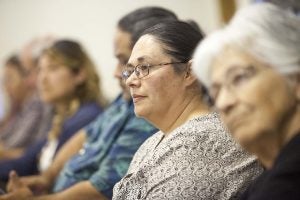This blog post was written by Adriana Fernandez, EDF’s 2019 Tom Graff Diversity Fellow.
California might have the fifth largest economy in the world, but many people in the state’s disadvantaged communities feel like they are living in a third world country because they don’t have safe, clean and affordable drinking water.
Throughout the past year as a Tom Graff Diversity Fellow at EDF, I had the privilege to gain a deeper understanding of these critical water challenges facing low-income, underrepresented communities in California and amplify the voices of community members left out of the decision-making process.
After conducting a series of interviews with community members, local nonprofit leaders, university professors and consultants, I identified three crucial challenges facing some of these communities. One water operator who I interviewed shared the story of a small water system in a rural community in the eastern part of Southern California that struggles with all three of these challenges. Read More











